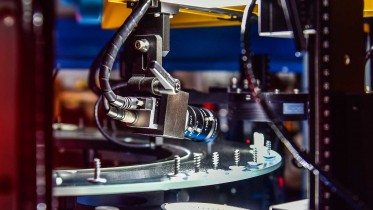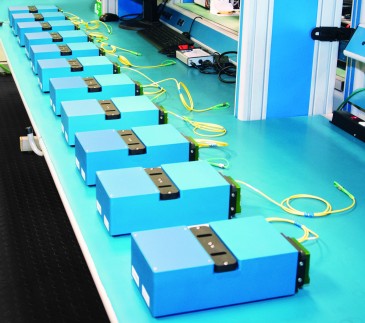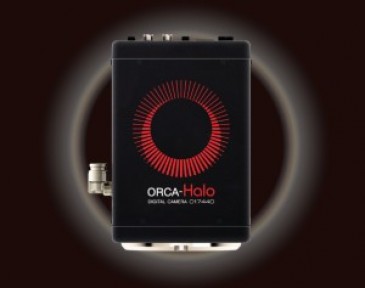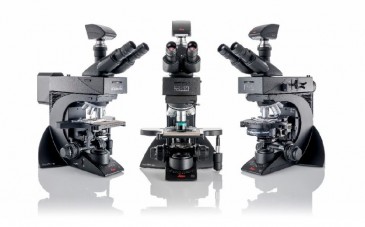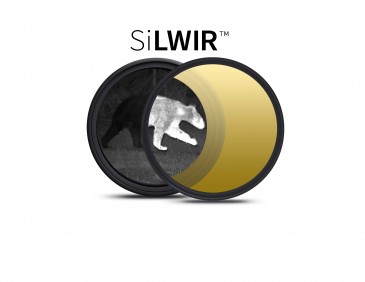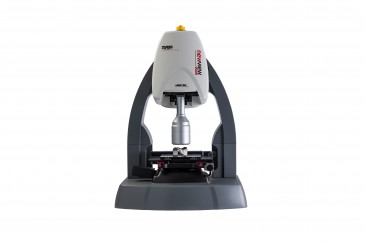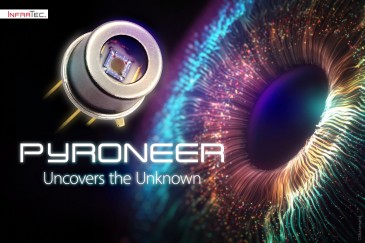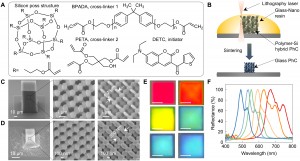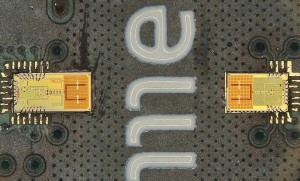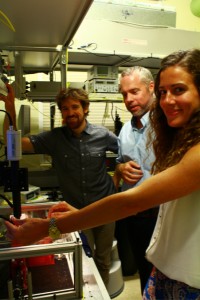
This first ever observation of on-chip soliton compression in a silicon photonic crystal helps researchers to better understand nonlinear waves in silicon and demonstrates that picosecond soliton compression in silicon is feasible. The silicon photonics advance could open the door for developing soliton-based devices in silicon, the material of choice for optoelectronic chips.
The research was led by Andrea Blanco-Redondo and Dr Chad Husko from the ARC Centre of Excellence for Ultrahigh bandwidth Devices for Optical Systems (CUDOS) at the University of Sydney (Australia). The project also involved colleagues from Tecnalia, Zamudio (Spain), Sun Yat-sen University, Guangzhou (China), and the University of York (UK).
Solitons, self-reinforcing localised waves that exhibit invariant or recurrent propagation, occur in a variety of nonlinear physical systems, including ion plasmas, neural networks, water surfaces and optical media. “In particular optical solitons arise from the interplay of two effects present in optical media: the dispersion, or the spreading out of the different colours in a light pulse, and the nonlinear Kerr effect, where new colours are generated from nonlinear mixing,” explains Blanco-Redondo. In their simplest embodiment, she adds, solitons are nonlinear waves that propagate through a medium undistorted. Slightly more complicated, on the other hand, is the evolution of higher-order solitons that undergo periodic recurrent propagation, giving rise to various effects, such as pulse compression.
While the field of silicon photonics has seen “fantastic breakthroughs” in the past few years, from high-speed silicon modulators to photodetectors and lasers, the building blocks of high speed communication, Blanco-Redondo says, “Full breadths of possible functionalities based on the nonlinear properties of silicon are still far from being entirely discovered.” She names particularly strong nonlinear absorption mechanism at telecommunication wavelengths as development barriers, namely two-photon absorption (TPA), which limits the achievable peak power and hence the strength of the desirable nonlinear effects. “By using a carefully designed slow-light nanostructure, we enabled this first observation of on-chip soliton compression, setting the basis for the development of nonlinear devices in silicon and opening new possibilities in all-optical processing and supercontinuum (white light) sources, among others.”
Blanco-Redondo, who finds it “particularly exciting to think that there are still new physical properties to discover in such a ubiquitous material as silicon,” says, “The understanding of solitons in optical fibres played a key role in the development of long-haul optical telecommunications and continues to help us understand and design the next-generation of terabit optical data links and components.” The visiting CUDOS researcher, originally from Spain, projects that the silicon photonics advance she and her collaborators were able to achieve could “boost the development of these, and many other thrilling applications on a CMOS-compatible chip integrating photonics and microelectronics, leading to cheaper, easy-to-make, mass-produceable devices.” Optical soliton waves in a silicon photonic crystal chip the size of a human hair, no doubt, would impact the design of future integrated optical communications systems.
What is more, Blanco-Redondo is confident there are many other fascinating phenomena to explore from this experiment, declaring, “This is just the beginning.” Her team is currently performing a systematic investigation of the dynamic interplay between dispersion, free carriers and Kerr effect on the basis of the experimental data they have collected. “These observations of soliton compression in silicon unveil a significantly new soliton regime, and there are many other interesting nonlinear dynamics to study,” she concludes.
The findings are detailed in the article "Observation of soliton compression in silicon photonic crystals,” published in Nature Communications.
Written by Sandra Henderson, Research Editor Novus Light Technologies Today





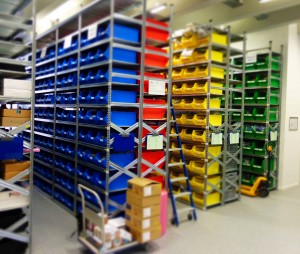


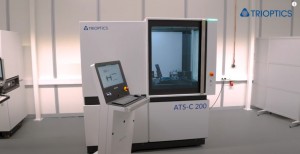
















 Back to Features
Back to Features
